Model Context Protocol (MCP) finally gives AI models a way to access the business data needed to make them really useful at work. CData MCP Servers have the depth and performance to make sure AI has access to all of the answers.
Try them now for free →Analyze SharePoint Data in Infragistics Reveal
Use the CData API Server to create an OData API on top of SharePoint data and visualize live SharePoint data in Ingragistics Reveal.
Reveal is a data visualization solution provided by Infragistics and can be paired with the CData API Server and SharePoint ADO.NET Provider to build dynamic dashboards from live SharePoint data. The CData API Server generates an OData API for SharePoint, which is natively consumable in Reveal. In this article, we walk through connecting to SharePoint in API Server and connecting to the API Server from Infragistics Reveal to create a simple dashboard.
About SharePoint Data Integration
Accessing and integrating live data from SharePoint has never been easier with CData. Customers rely on CData connectivity to:
- Access data from a wide range of SharePoint versions, including Windows SharePoint Services 3.0, Microsoft Office SharePoint Server 2007 and above, and SharePoint Online.
- Access all of SharePoint thanks to support for Hidden and Lookup columns.
- Recursively scan folders to create a relational model of all SharePoint data.
- Use SQL stored procedures to upload and download documents and attachments.
Most customers rely on CData solutions to integrate SharePoint data into their database or data warehouse, while others integrate their SharePoint data with preferred data tools, like Power BI, Tableau, or Excel.
For more information on how customers are solving problems with CData's SharePoint solutions, refer to our blog: Drivers in Focus: Collaboration Tools.
Getting Started
Connect to SharePoint from API Server
CData API Server uses a straightforward, point-and-click interface to connect to data sources and generate APIs.
- Open API Server and click Settings -> Connection -> Add Connection
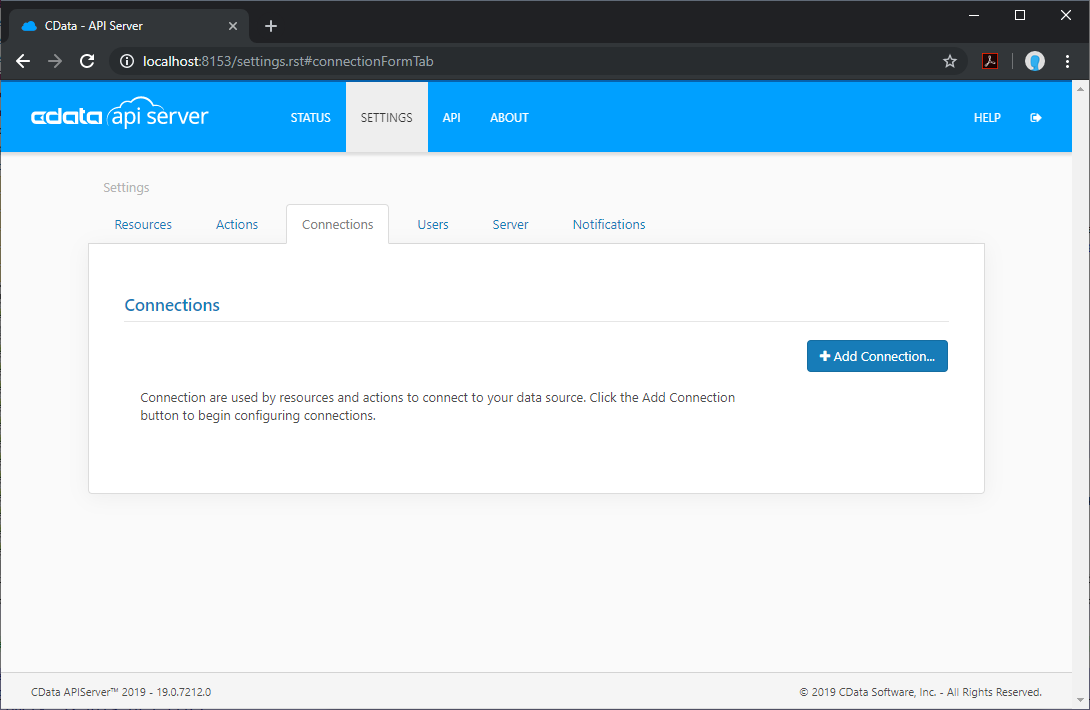
- Select "SharePoint"
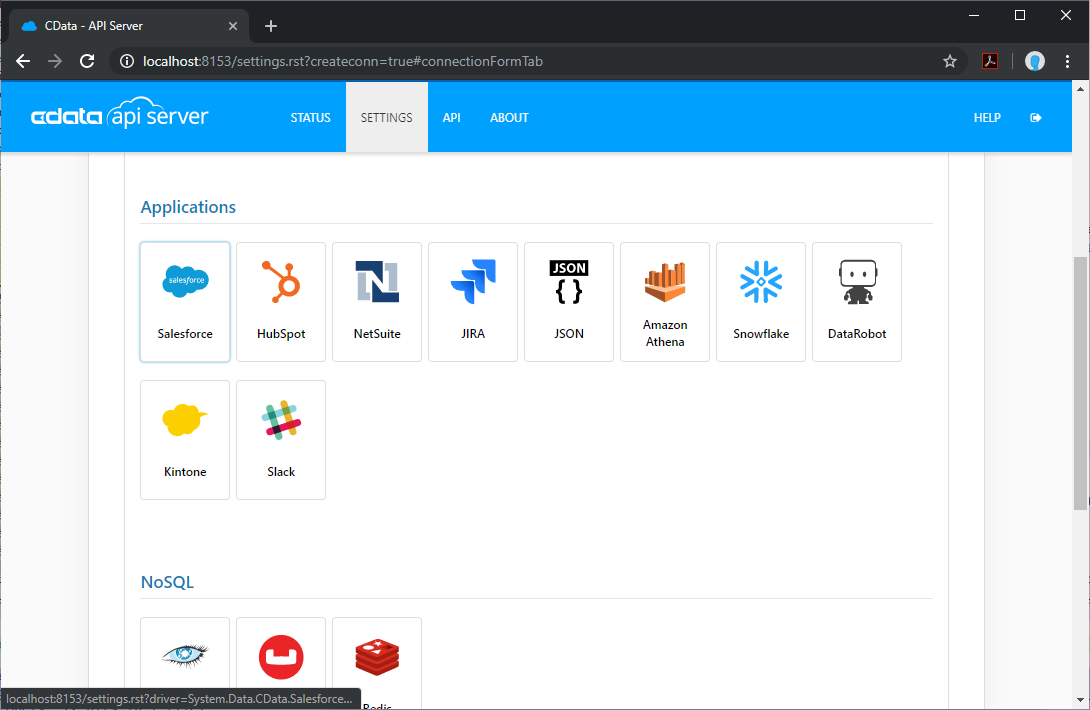
- Enter the necessary authentication properties to connect to SharePoint.
Set the URL property to the base SharePoint site or to a sub-site. This allows you to query any lists and other SharePoint entities defined for the site or sub-site.
The User and Password properties, under the Authentication section, must be set to valid SharePoint user credentials when using SharePoint On-Premise.
If you are connecting to SharePoint Online, set the SharePointEdition to SHAREPOINTONLINE along with the User and Password connection string properties. For more details on connecting to SharePoint Online, see the "Getting Started" chapter of the help documentation
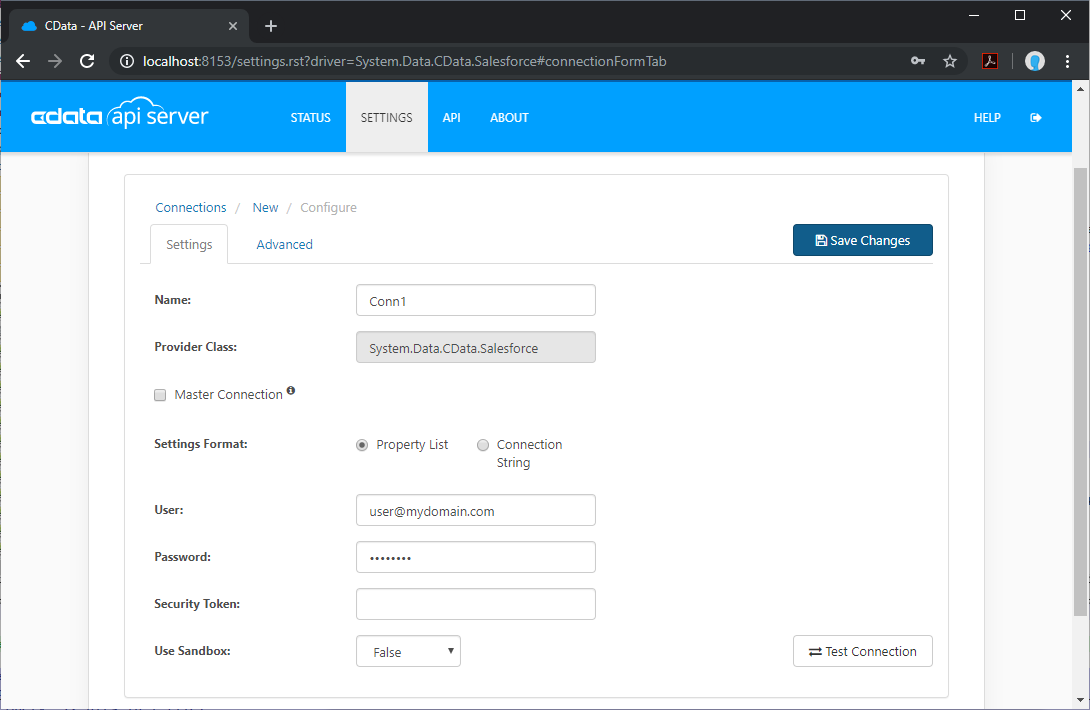
Add SharePoint Resource Definitions in API Server
After connecting to SharePoint, create Resources, which represent API endpoints for SharePoint data.
- Click Settings -> Resources -> Add Resource
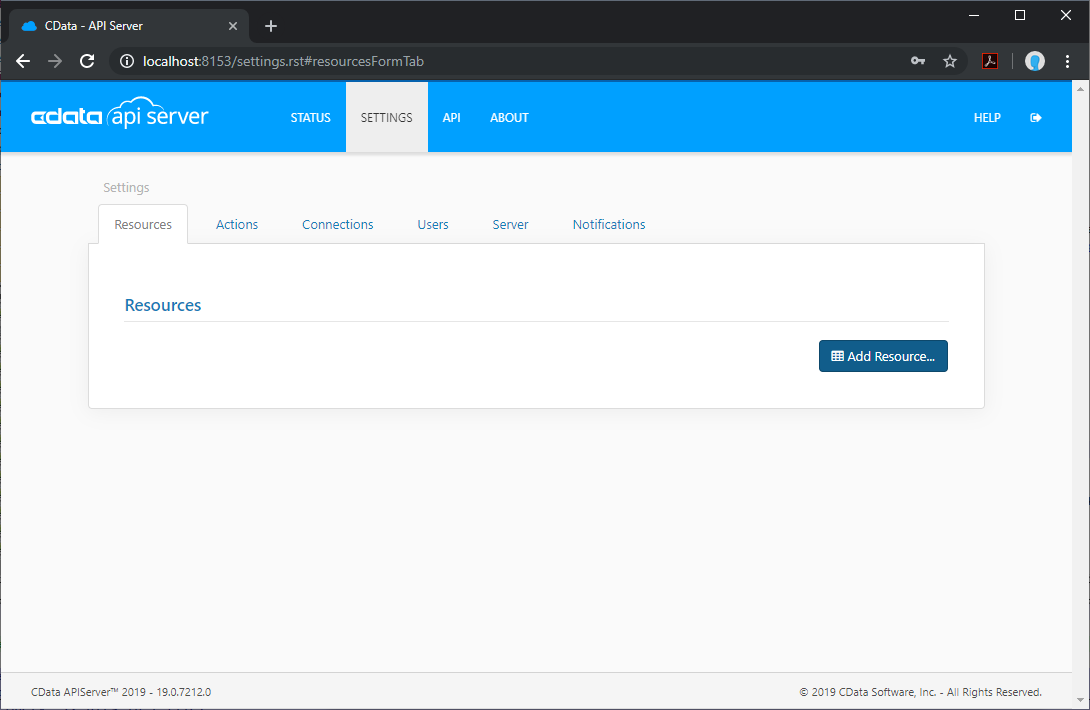
- Select the SharePoint connection
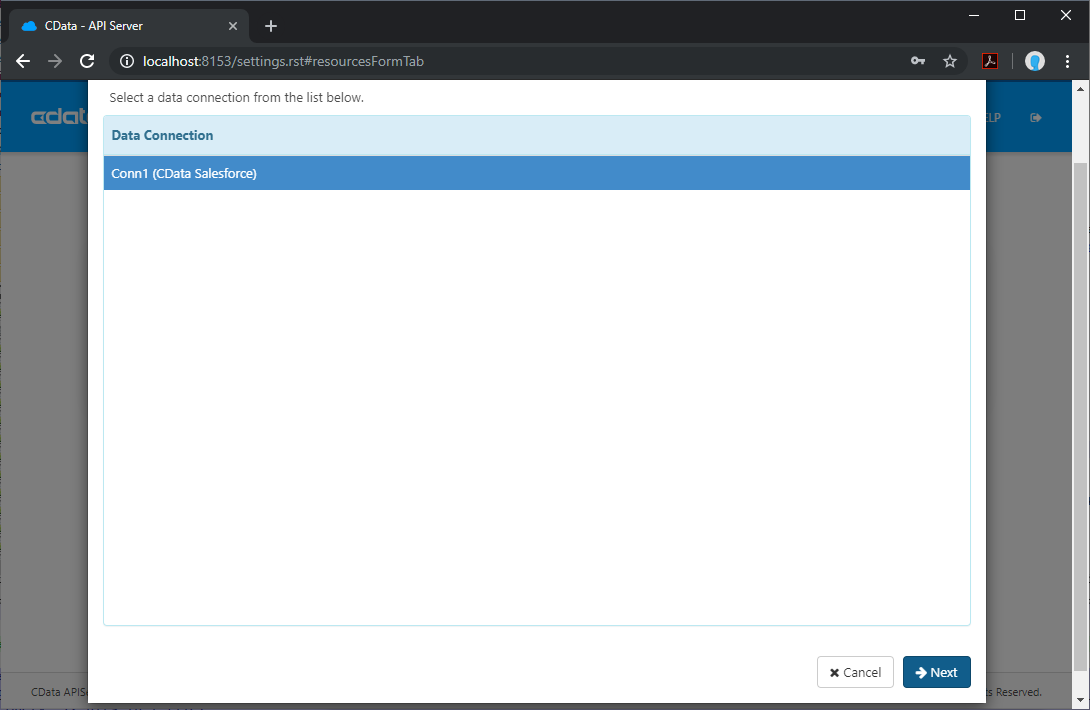
- Select the table you wish to retrieve and click Next
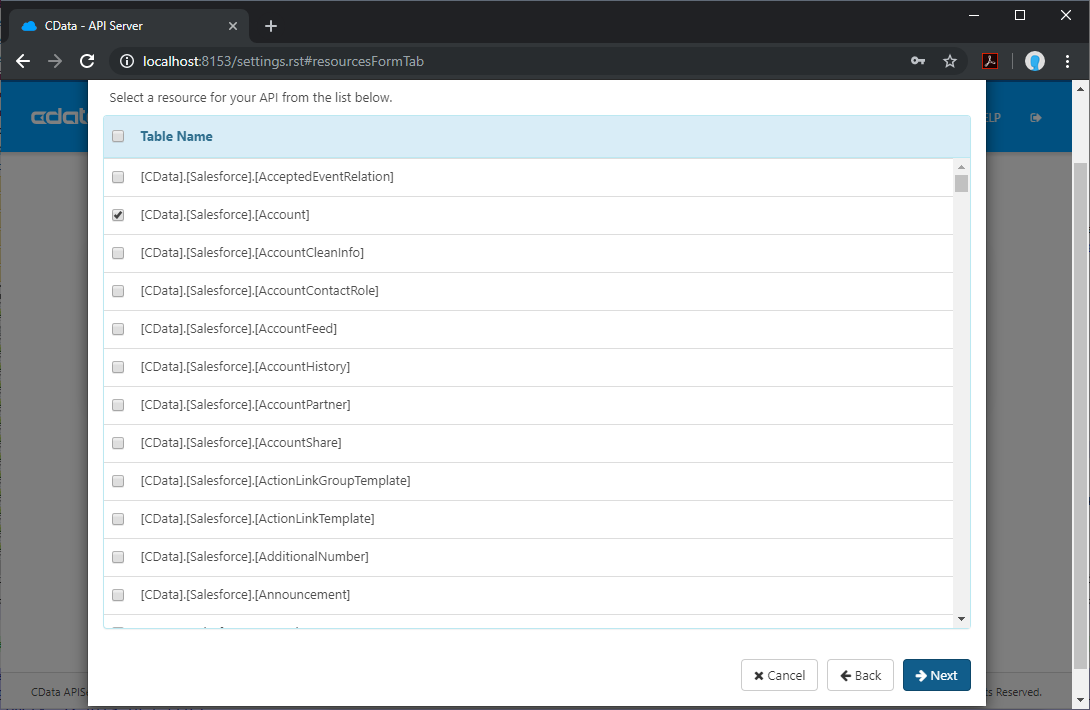
- (Optional) Edit the resource to select specific fields and more
- Save the settings
Add an API Server User
Create a User to connect to SharePoint from Reveal through API Server.
- Click Settings -> Users
- Click Add
- Configure a User with access to the SharePoint Connection and Resource(s)

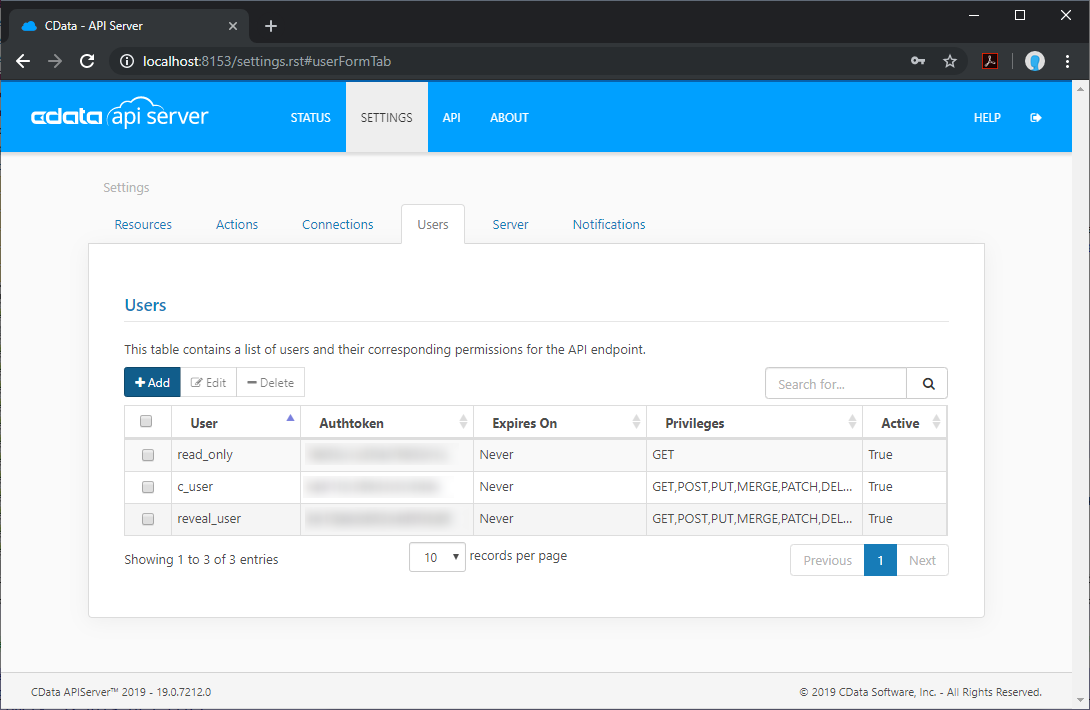
(Optional) Configure Cross-Origin Resource Sharing (CORS)
When accessing and connecting to multiple different domains from an application such as Ajax, there is a possibility of violating the limitations of cross-site scripting. In that case, configure the CORS settings in Settings -> Server.
- Enable cross-origin resource sharing (CORS): ON
- Allow all domains without '*': ON
- Access-Control-Allow-Methods: GET, PUT, POST, OPTIONS
- Access-Control-Allow-Headers: Authorization
Save the changes to the settings.
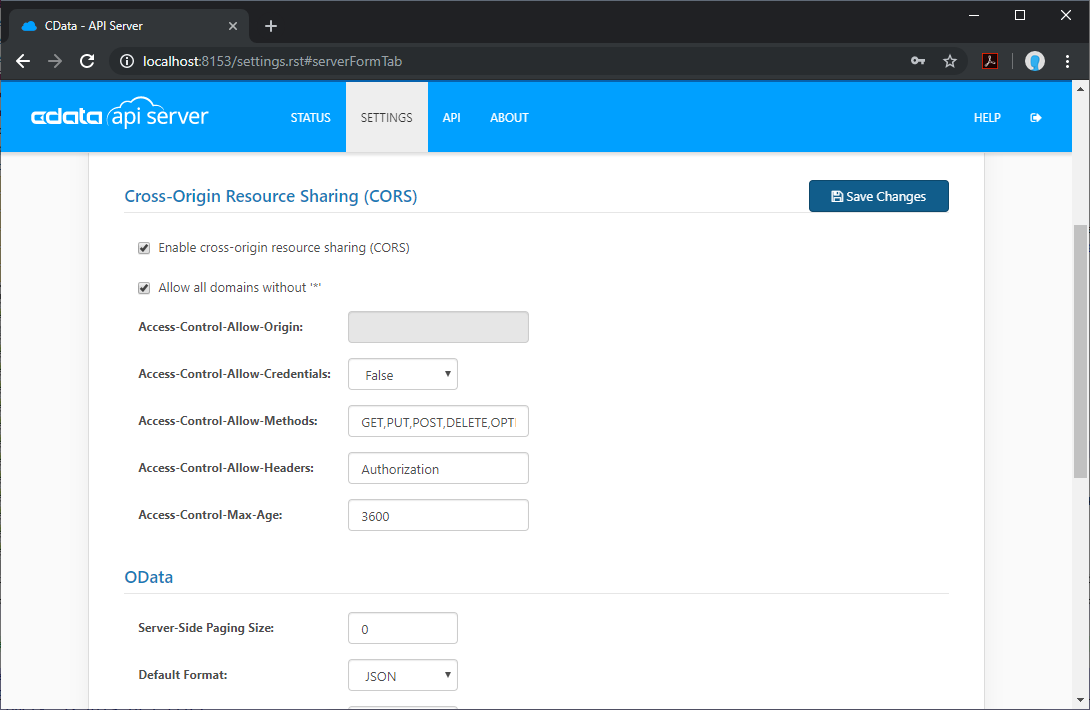
Create a Dashboard in Reveal
With the API Server configured, we can visualize SharePoint data in Reveal.
- Log into Reveal and click Dashboards -> New
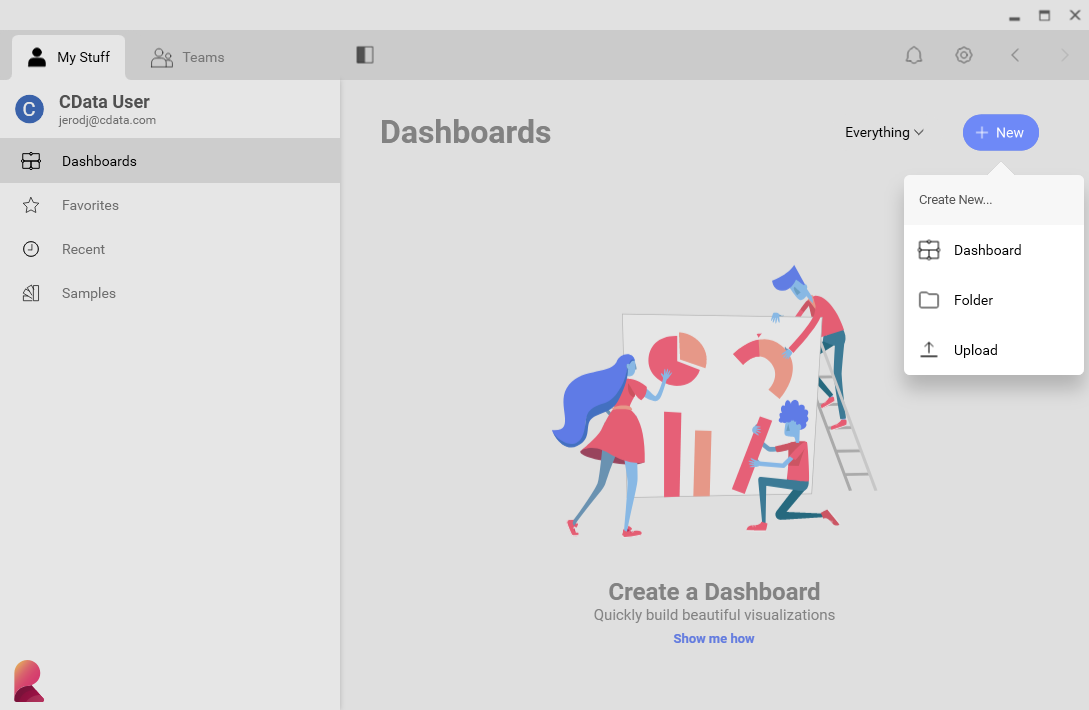
- Click Data Source -> OData Feed

- Specify the API Server API endpoint URL, for example: https://serverurl/api.rsc
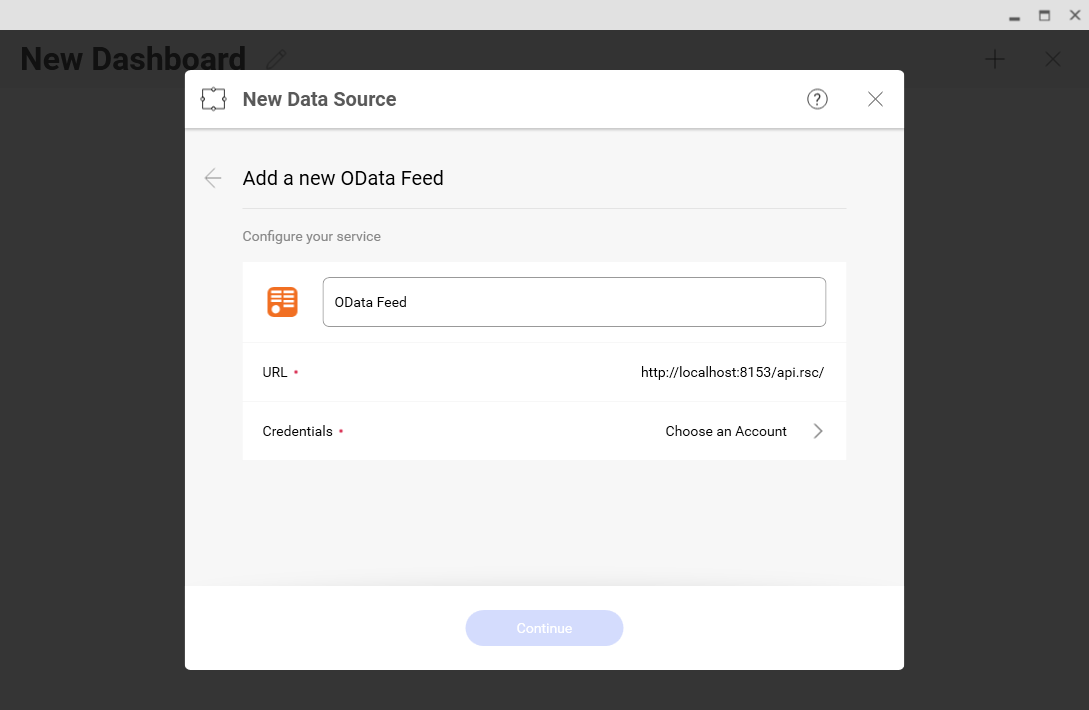
- Select Generic Credentials and specify the API Server username and authentication token
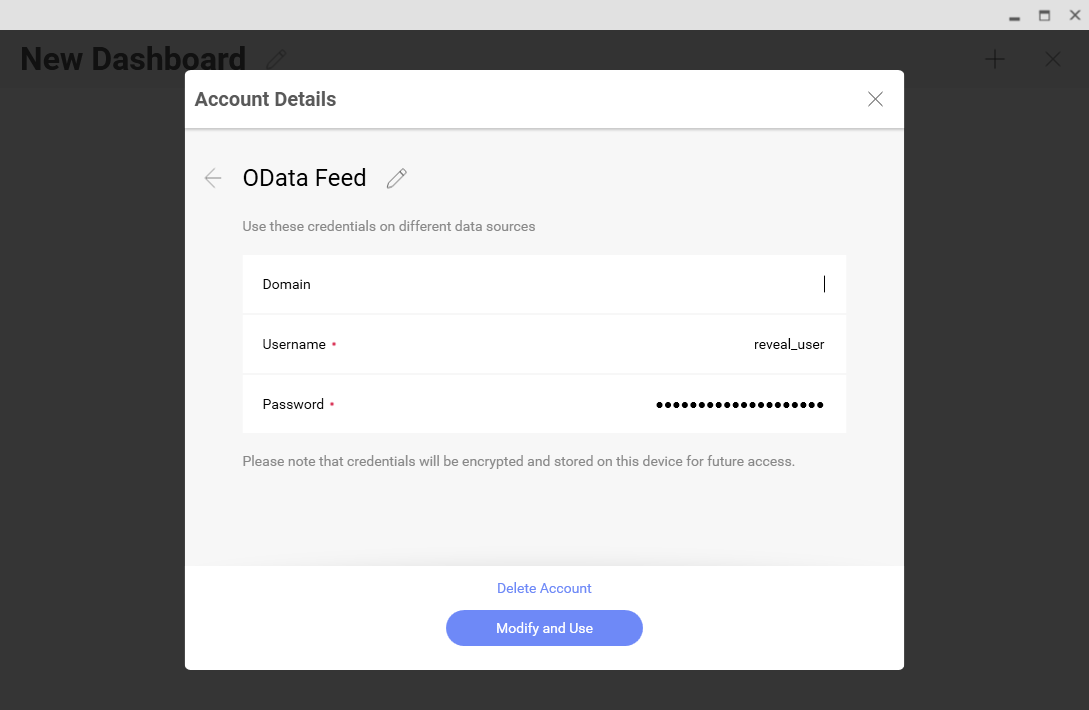
- Select the entity you wish to visualize
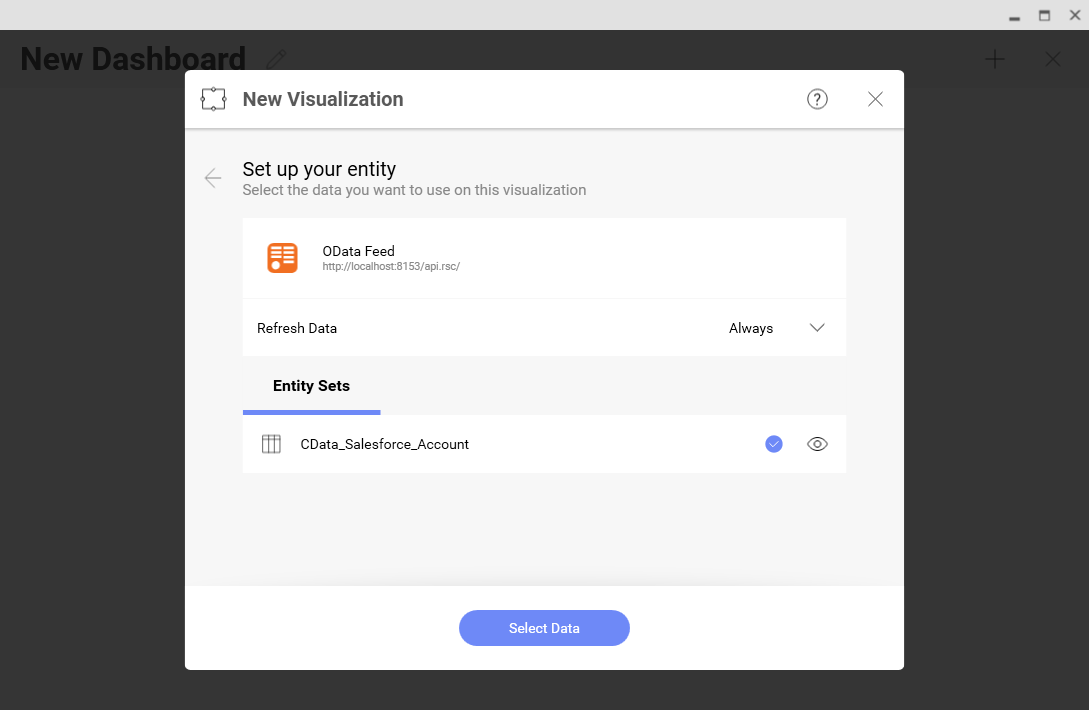
- Select fields and choose a chart type
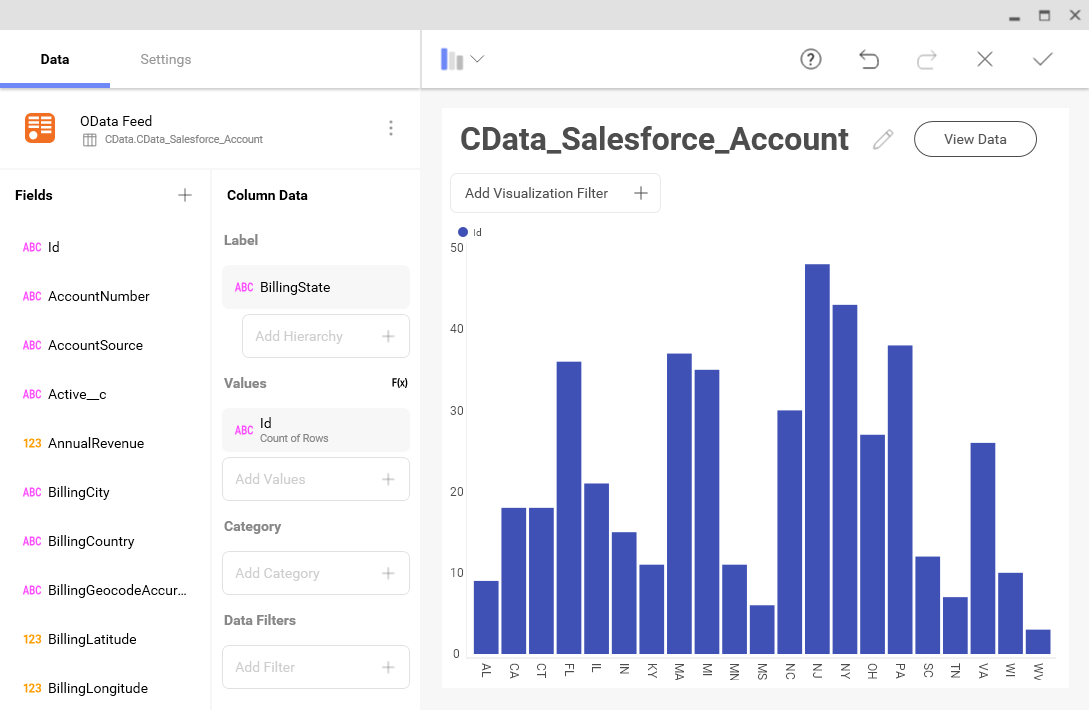
More Information & Free Trial
At this point, you have created a simple dashboard from live SharePoint data. For more information on creating OData feeds from SharePoint (and more than 150 other sources), visit the API Server page. Download a free, 30-day trial and start working live SharePoint data in tools that consume OData APIs.
